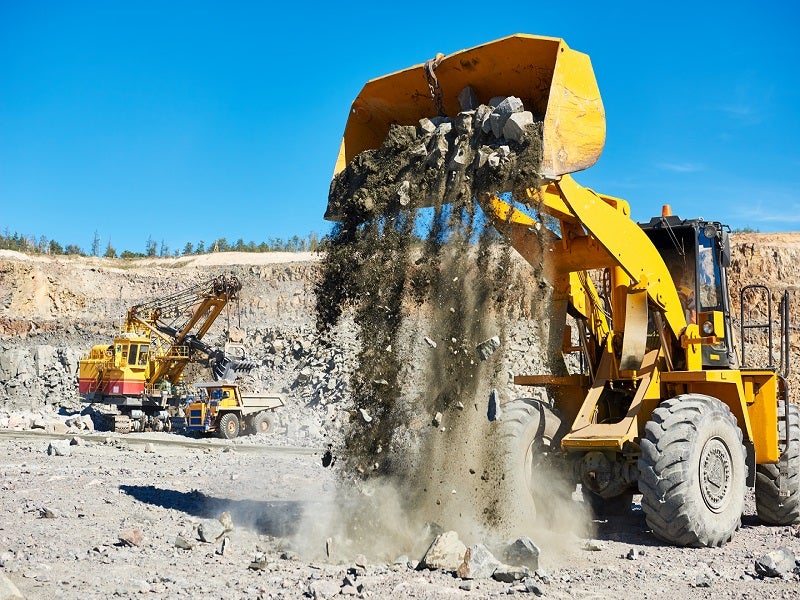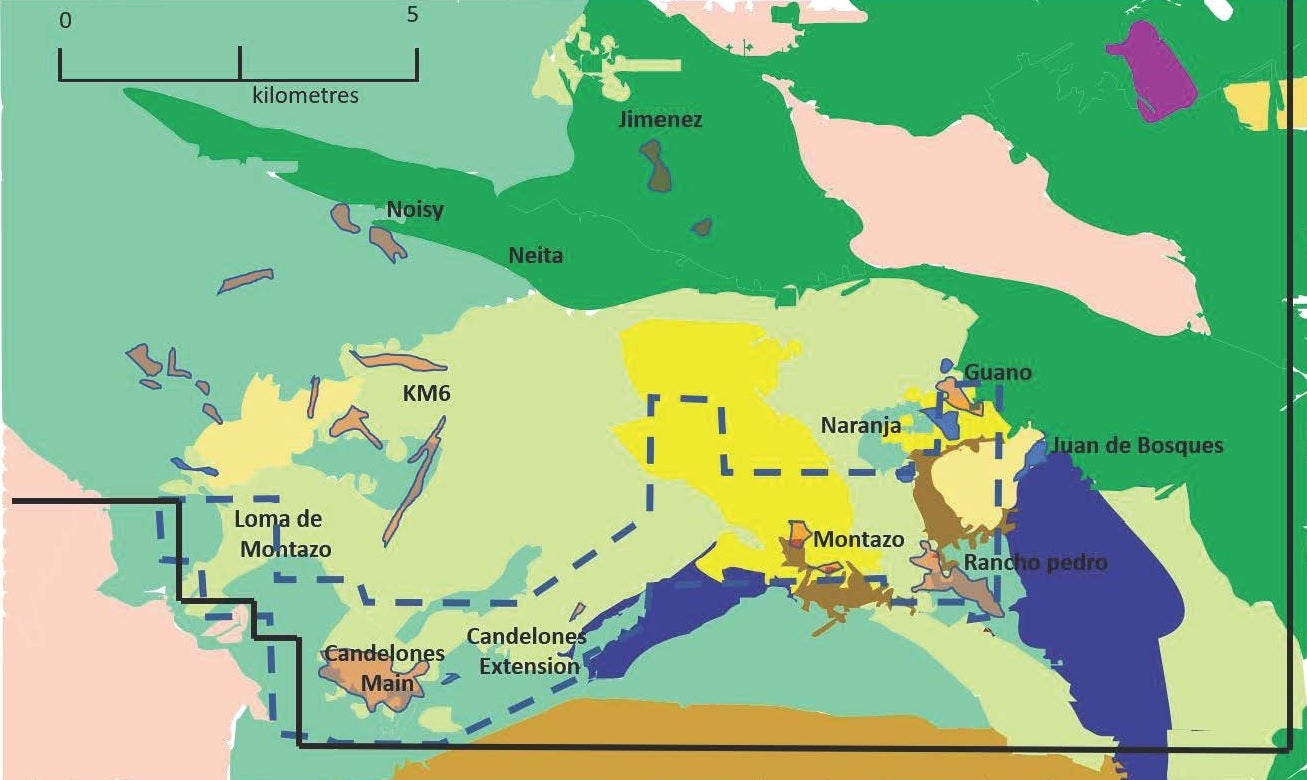The Candelones oxide project is an open-pit mine in Dajabón, the Dominican Republic. It is being developed by Unigold, a Canada-based mineral exploration company.
A feasibility study for the project was completed in November 2022 that highlighted an investment of approximately $31.8m and a mining life of 3.3 years.
The project will encompass the development of a 5,000 tonne per day (tpd) open-pit mining operation to produce approximately 31,426 ounces (oz) of gold annually.
The environmental and social impact assessment (ESIA) report for the project will be undertaken following the approval of the exploitation concession for the Neita Sur concession, which is currently in the final stages of review by the Dominican Government. The ESIA is expected to be completed in one year from the approval of the concession.
Construction and operation of the mine will require additional permits and authorisations, which will be submitted upon approval of the ESIA.
Candelones Project location and geology
The Candelones oxide project is located within the Neita Sur concession in the province of Dajabón, in the northwest Dominican Republic. The project comprises the Candelones Main, Candelones Connector, and Candelones Extension deposits.
The Neita concession is dominated by the Tireo Formation, which is subdivided into Upper and Lower members, intruded by granitoid stocks and batholiths. Andesitic-composed volcanic, volcaniclastics and pyroclastics dominate the older Lower Tireo formation.
Mineralisation and reserves of the Candelones project
Mineralisation at Candelones occurs as anomalous gold, silver, copper, lead and zinc, confined to brecciated dacite volcaniclastics and is associated with andesite volcanics/volcaniclastics or dacite volcanics.
The proven and probable mineral reserves at Candelones are estimated at 5.59 million tonnes (mt) grading 0.67Mg/t of gold with a total gold metal content of 121 million ounces (moz) as of August 2022.
Mining methods used at Candelones project
The Candelones project will be developed as a conventional open-pit mine using truck-and-shovel mining techniques. The oxide material is soft and can be recovered through ripping with no drilling and blasting required.
The first three years of mining operations will be divided into six pushbacks and executed in 5m benches. Mining will be carried out in six phases that will be distributed over two separate pits. The main pit will encompass phases one, two, 4E and 4W while the secondary pit will comprise phases 3E and 3W.
Mining will begin with phases one and 3E due to higher ore grade, followed by phases 3W, two, 4E and 4W depending on the ore grades.
Two 3.2m³ (CAT349) excavators will be deployed with one in ore and the other handling waste. A fleet of 40t articulated trucks will support the operations. A 3.2m³ excavator-riper will also support the two excavators to handle the coarser material.
Stockpile rehandling activities will be handled by a CAT966 wheel loader and assist the main excavator with waste management.
Processing at Candelones project
The run-of-mine (ROM) ore will be fed to a mobile screening plant to separate the coarse leach material feed from the fines. The fine particles will be agglomerated with cement and sodium cyanide and leached to produce a pregnant leach solution (PLS) for further processing.
The PLS from the heap leach process will be pumped to the carbon-in-column (CIC) circuit. The resulting barren solution will pass a safety screen to recover any possible carbon. The loaded carbon will be fed to the adsorption, desorption and refining (ADR) plant comprising acid wash, elution, carbon preparation, regeneration and disposal.
The resultant solution will be neutralised and a centrifugal pump will transfer the loaded carbon to a pressurised strip vessel for gold desorption. The resulting strip solution containing gold and silver will undergo electrowinning (EW) to recover gold and silver as a soft metal sludge.
The gold/silver sludge will be washed and filtered in a sludge filter to produce a wet filter cake, which will be calcinated to remove additional moisture.
The dried sludge will be mixed with flux and transferred to a propane-fired crucible melting furnace. Gold and silver will be separated from the slag material to recover a doré bar product. The mining operations will not require a tailings facility.
Infrastructure
The Candelones property is accessible by road, via Highway #45 from Monte Christi. A network of trails and unpaved roads leads to the property off Highway #45.
Harvested rainwater will serve as the sole source of water supply for the project. Rainwater will be collected in a surface storage lagoon and pumped to the required locations. The power required for the project will be met through 1MW diesel generators.
Contractors involved
The feasibility study for the project was prepared by Micon International, a mining consultancy. The company was also responsible for preparing the mineral reserve and capital cost estimates. Micon also prepared the technical report for the project.
Geotechnical and water resource consultant Tierra Group International was responsible for the heap leach facility and waste rock stockpile design.
Promet101 Consulting, a process design and engineering consultancy, was engaged for the process design and capital and operating cost estimates.
Bureau Veritas Commodities Canada, a commodities sampling, inspection and testing services provider, carried out the column leach test work for the Candelones Oxide project.






